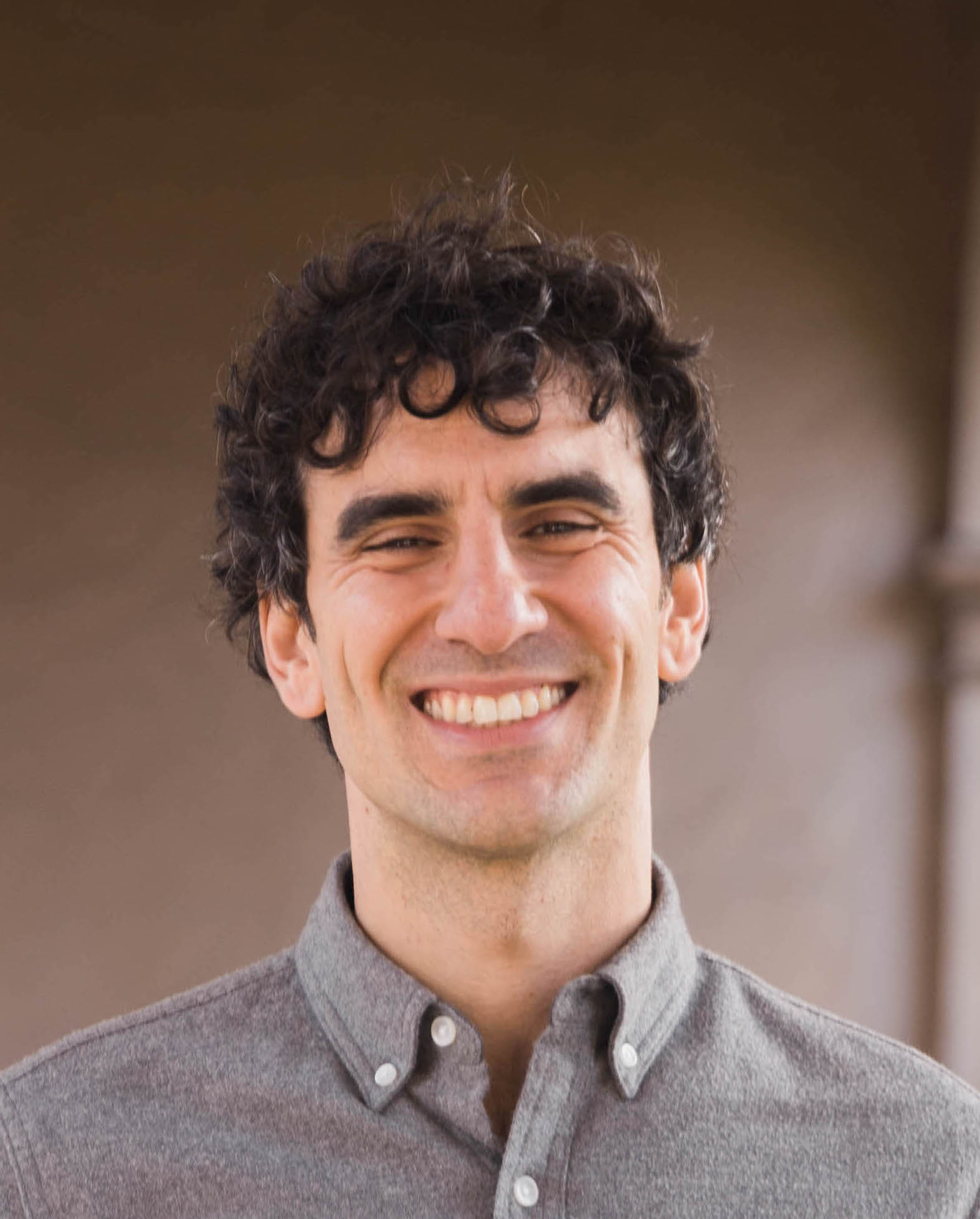How Hard Is It to Get Into Dental School?
/Admissions statistics, application mistakes, and strategies to maximize your dental school admissions odds
how hard is it to get into dental school?
----
Part 1: Introduction
At some point along your journey into dentistry, you’ve probably wondered, “How hard is it to get into dental school?” After all, of the many challenges that becoming a dentist presents, getting into dental school is among the most significant and consequential.
As a pre-dental student, you’ve likely worked hard to maintain a strong GPA, participate in meaningful extracurriculars, and ace the DAT. At the end of the day, however, it’s always difficult to realistically predict your chances of getting into dental school, and it can be tough to kick the nagging feeling that you might not walk away with any acceptances.
Let’s take a look at the facts and statistics regarding current dental school acceptance rates—and discuss what they mean for you. We’ll help you understand exactly what you’re up against with the dental school admissions process, plus we’ll highlight common application mistakes and provide suggestions on how to avoid them so you can increase your chances of acceptance and a successful dental career.
----
Part 2: Dental school acceptance rates
To start, let’s dive into current and historical dental school acceptance rates. Getting a sense of the big picture may help you understand the major trends in dentistry, a profession that’s evolving by the year.
According to data from the American Dental Education Association (ADEA), in 2000, only 54.5 percent of dental school applicants were accepted and eventually enrolled in a dental school. In 2024, the most recent year for which data are available, that number was a touch lower, but hardly meaningfully so, at 53.8 percent. There seems to have been a slight bump in 2023, however, with 58.6 percent of accepted applicants enrolling. While these nearly identical statistics seem to suggest that dental school acceptance rates have remained static over the last 20 years, they don’t tell the whole story in regards to the admissions changes and trends that have occurred during that period.
Below are key takeaways garnered from looking at nearly two decades’ worth of data.
Changing dental school acceptance rates
Highest acceptance rate: 2023 (58.6% of applicants got in)
Lowest acceptance rate: 2007 (33.6% of applicants got in)
Takeaway: Acceptance rates have varied significantly over the years. Why is this the case? Remember that acceptance rates reflect both the total number of seats available in dental schools across the country and the number of applicants per year.
Dental school seats available and numbers of applicants
2000: 4,234 available seats; 7,700 applicants
2007: 4,618 available seats; 13,742 applicants
2022: 6,328 available seats; 11,180 applicants
Number of dental schools
2000: 55 dental schools open
2024: 76 dental schools open
Takeaway: There are more people applying to dental schools now than there were 20 years ago, but there are also more seats available, as several dental schools opened after 2007.
Average GPA and DAT of dental school enrollees
We’ve also seen, through ADEA data, that the average total GPA and DAT among dental school enrollees is increasing.
Average GPA of successful dental school applicants:
2000: Average total GPA: 3.35; science GPA: 3.25
2024: Average total GPA: 3.53; science GPA: 3.42
Average DAT score of successful dental school applicants:
Note: Beginning in March 2025, the ADA has changed the scale on which DAT scores are reported. They will now be reported using 3-digit scores ranging from 200 to 600. We’ve noted this change in this guide with the equivalent new score in parentheses where a DAT score is referenced. For a complete list of old to new scores, see the ADA’s DAT concordance table.
2000: 18.5 (academic average) (400)
Total science: 18.3
Perceptual ability: 17.7
2024: 19.7 (academic average) (~418)
Total science: 19.9
Perceptual ability: 19.3
Takeaway: While the total number of dental schools and dental school seats has increased over the last 20 years, it is still more competitive than ever to get into dental school.
Looking for premium DAT content resources to ace the exam? Click here to access our full suite of comprehensive DAT guides.
Gain instant access to the most digestible and comprehensive DAT content resources available. Subscribe today to lock in the current investments, which will be increasing in the future for new subscribers.
What do averages hide?
Some dental schools are far more competitive than others, and individual schools can have dramatically different statistics among admitted students. Here are some examples:
Harvard School of Dental Medicine
Average GPA: 3.85
Average DAT: 22 (460)
Note: These scores were the most recently reported by HSDM, however they no longer report new averages. They currently state that they do not have a minimum GPA or DAT score, only that a 3.60 and DAT score of 20 are preferred.
Dental College of Georgia at Augusta University:
Average GPA: 3.73 (class of 2028)
Average DAT: 20 (420)
Tufts School of Dental Medicine
Average GPA: 3.42 (class of 2027)
Average DAT: 19 (410)
Takeaway: Understand national averages, but also investigate specific schools to understand the statistics for your desired programs. Consider range, too—for instance, while the extremely competitive UCSF School of Dentistry has an average DAT score of 23.3 (~471), it actually accepted students with DAT scores ranging from 18 to 29 (390 to 580).
Cost of dental school applications
While your DAT score, GPA, and extracurriculars are important elements that can make or break your acceptance to dental school, cost is another factor to consider.
The ADEA AADSAS application fee is $264 for the first dental school and $115 for each additional school. Nearly every dental school also has a secondary or supplemental application, which costs, on average, an additional $80 per application. Finally, factor in an additional $400 plus or minus for the flight, hotel, and rideshare or public transportation needed for each onsite interview.
With these average costs, the total amount to apply to 15 dental schools would be just over $5,000, as follows:
ADEA AADSAS application $264 + ($115 x 14) = $1,874
Supplemental applications $80 x 15 = $1,200
Assume 5 interviews $400 x 5 = $2,000
Total cost = $5,027
Takeaway: While applying to dental school is very competitive, it is important to do your research and carefully select the programs to which you apply. Blindly applying to 30+ dental schools simply isn’t the best approach and will end up being quite expensive without significantly improving your chances of admission. Instead, we recommend a methodical approach that includes a mix of “reach,” “target,” and “safety” programs (explained below) to maximize your chances of admission without breaking the bank.
----
----
Part 3: Dental school application mistakes
Of the over 12,000 applicants in 2024, some undoubtedly made needless mistakes that quickly moved them to the bottom of the pile. To boost your chances of admission to dental school, here are five common mistakes to avoid.
Dental school application mistake #1: Submitting the AADSAS application late
The application for admissions starting Fall 2026 is officially due on February 6th, 2026. But, in our experience, any application received after September 2025 will be at a severe disadvantage to those who apply earlier.
With rolling admissions, applications are reviewed on a first-come first-served basis. For Fall 2026 admissions, the application may be accessed on May 13th, 2025 and submitted starting June 3rd. We recommend submitting your application (including your DAT score) no later than July 15th for admissions starting the fall of the following year. Any later and your chances of landing an interview go down dramatically.
(Suggested reading: The Ideal Dental School Application Timeline)
Dental school application mistake #2: Writing a mediocre personal statement
Regardless of your DAT score or GPA, you need a well-written personal statement. Submitting a personal statement that is uninteresting, poorly written, or fails to answer the question of why you want to become a dentist immediately decreases your chances of admission.
You’ll need to take the time to write a personal statement that is engaging and leaves no doubt regarding your passion and interest in dentistry. Give the admissions committee a reason to want to meet you in person at an interview.
Begin well in advance so you have ample time to edit and revise. We suggest aiming to complete a first draft by the end of April of your application year so that you can go through a few rounds of revision before submitting in June or July. Enlist three to five trusted readers to provide feedback before you submit.
(Suggested reading: Dental School Personal Statement: The Ultimate Guide)
Looking for unique dental school personal statement examples to accelerate your writing?
Gain instant access to the most in-depth dental school personal statement resources available so you can write an essay that stands out.
Dental school application mistake #3: Submitting a sloppy ADEA AADSAS application
The AADSAS application for dental school does not include a CV or resume. There are specific categories with strict format limitations where you enter all of your extracurricular experiences and activities. Additionally, it can take several weeks to complete the full application.
The nonintuitive format of the application combined with the time commitment can lead applicants to skimp on the process, especially if they have an above average GPA and DAT that they are hoping to rely on. Unfortunately, submitting a poor application can make a significant negative difference, even with above average statistics.
So, give yourself ample time to complete the application. Allow a minimum of two weeks, not including the time needed to write your personal statement. That means at least two weeks dedicated strictly to entering the necessary information into your application.
Fortunately, there are three weeks between when the application opens on May 13th and when submissions begin on June 3rd, meaning you can take your time filling out the application even if you want to submit at the earliest possible date.
Treat the application as a series of mini essays describing your extracurricular experiences. Review it for both substance and grammar/spelling. Consider also creating a resume or CV prior to the application opening. This way, you are simply transferring the information into your application after it has already been reviewed and edited in a thoughtful way.
Dental school application mistake #4: Underpreparing, overpreparing, or preparing in the wrong way for dental school interviews
Being underprepared can obviously backfire. Being overprepared, on the other hand, is also a risk. Memorizing responses means you’ll risk coming across as overly robotic, without passion or personality. However, preparing in the wrong way can occur when an applicant assumes they are walking into a one-on-one interview but are surprised the day of to learn it’s actually an MMI.
After receiving an interview offer, confirm the interview format. Is it a one-on-one interview with faculty, a panel interview with alumni and current students, a group interview, or an MMI? The ADEA has published a handy dos/don’ts flyer that applies to virtual interviews but also includes some helpful general tips for interview day.
In addition, research each school. What makes it unique? What do they value or emphasize in their program? We recommend having at least three specific talking points per school that answer the question “Why do you want to come to our school?”.
Finally, make sure to have an honest yet engaging answer to the question “Why do you want to be a dentist?” that clearly describes your journey into dentistry as well as your passion for the profession.
Answering this question by saying your lifelong dream has been to help others is cliché and trite. Think of something that gives more insight into your motivations and what excites you about dentistry. Often, it’s a good idea to reflect on the moment when your interest was first sparked. What happened to lead you to that point? Recall the moment when you thought, “I had no idea there was so much to dentistry!”
(Suggested reading: How to Ace Your Dental School Interview)
Dental school application mistake #5: Applying to the wrong mix of dental schools
Some applicants have too many reach and not enough target or safety schools. Others apply to only public state schools as out-of-state applicants, not realizing that demographic often has a slimmer-than-average chance of acceptance.
It’s important to apply to a good mix of reach, target, and safety schools, as well as a balance of private vs. public schools. In general, we recommend applying to at least 15 schools with roughly the following ratio:
2–4 reach schools (your GPA and DAT are below their average statistics)
8–12 target schools (your GPA and DAT are near their average statistics)
3–5 safety schools (your GPA and DAT are above their average statistics)
Most state schools cap the number of out-of-state applicants, while private schools typically give no preference for in-state versus out-of-state applicants. For example, the dental schools in Texas use their own application system for Texas residents (TMDSAS) and typically only take a handful of out-of-state applicants, some years taking none. In contrast, out-of-state applicants at the University of Louisville School of Dentistry typically comprise roughly 70 percent of any given entering class. Marquette University School of Dentistry is a private school that regularly has classes composed of 50 percent out-of-state applicants.
Ultimately, do your homework on every school you apply to in order to have the best possible chance at getting admitted.
(Suggested reading: The Best Dental Schools and Ivy League Dental Schools)
Dental school application mistake #6 Fixating on your grades to the detriment of experience
It’s natural to want to focus on achieving stellar grades, believing they are the most important aspect of your application that admissions committees look at when deciding whether to grant you an interview. However, if you neglect to gather a variety of extracurricular experiences, you do so to your detriment.
Adcoms want to see a well-rounded applicant that not only has high scores, but can speak to real-world experience where they’ve demonstrated a desire to help others, leadership ability, and above all a keen interest in dentistry. They’re looking to accept students who are fully aware of the career path they are committing to and who are dedicated to being the best dentist they can be.
Given two students—one with a 3.75 GPA, shadowing and volunteering experience, and the other with a 4.0 but hardly any experience outside of the classroom—we’ve found the student with more experience to be the one more likely to get an interview.
Dental school application mistake #7 Failing to leverage your experience as a non-traditional applicant
Non-traditional applicants bring unique perspectives and life experiences to dental school. If this is you, it would be worthwhile to positively highlight your experiences in your application. The trick is doing so effectively.
Be sure to highlight how your previous career or life experiences have prepared you for dentistry. Admissions committees value the maturity and diverse insights of non-traditional students, but if they aren’t aware of it you may be doing yourself a disadvantage. Consider how you can mention these in your personal statement without negatively impacting your chances. For instance, many non-traditional students have episodes where they didn’t do so well academically and feel they need to explain this somewhere in their application. Make sure the focus remains on what you learned from the experience rather than making excuses for what happened.
Furthermore, when it comes to your experience, do your due diligence before applying. Have you met all of the academic requirements, and is your undergraduate coursework still relevant? If anything is outdated, consider retaking courses to increase your chances.
This goes for shadowing, too. Do you have enough shadowing hours to be competitive, or is this something you need to work on? Since adcoms may be more closely examining your experience than other applicants, it can help to have as much as possible when you apply.
Final thoughts
The dental school admissions process is competitive and growing more difficult every year. While the number of dental schools is consistently increasing, so too are the average GPAs and DAT scores of successful applicants. As such, for the best chances of admissions success, it’s crucial to focus on earning strong grades and studying hard for the DAT, in addition to preparing a standout personal statement and other application materials.
That said, the institutions that make up the dental school landscape range considerably in their selectivity and average statistics, so you can tailor your school list according to how competitive your applicant profile is, bearing in mind other factors, like residency status, that affect your odds of acceptance.
While getting into dental school is challenging, by approaching the admissions process in a thoughtful, data-driven way, you can boost your chances of admission and be that much closer to earning your DMD or DDS.





